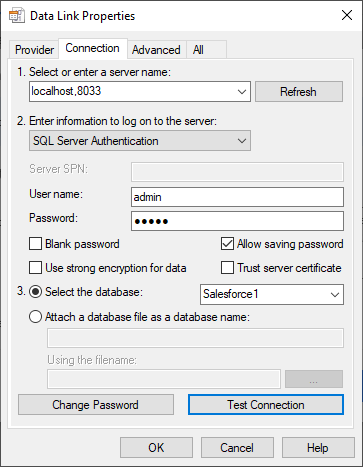Discover how a bimodal integration strategy can address the major data management challenges facing your organization today.
Get the Report →How to Use CData Connect to Access Live SQL Analysis Services Data in Power Automate
CData Connect for SQL Analysis Services enables you to integrate SQL Analysis Services data into workflows built using Microsoft Power Automate Desktop.
CData Connect enables you to access live SQL Analysis Services data in workflow automation tools like Power Automate. This article shows how to integrate SQL Analysis Services data into a simple workflow, moving SQL Analysis Services data into a CSV file.
CData Connect provides a pure SQL interface for SQL Analysis Services, allowing you to easily integrate with live SQL Analysis Services data in Power Automate — without replicating the data. Connect looks exactly like a SQL Server database to Power Automate and uses optimized data processing out of the box to push all supported SQL operations (filters, JOINs, etc) directly to SQL Analysis Services, leveraging server-side processing to quickly return SQL Analysis Services data.
Create a Virtual SQL Database for SQL Analysis Services Data
CData Connect Server uses a straightforward, point-and-click interface to connect to data sources and generate APIs.
- Log into Connect Server and click Connections.
![Adding a connection]()
- Select "SQL Analysis Services" from Available Data Sources.
-
Enter the necessary authentication properties to connect to SQL Analysis Services.
To connect, provide authentication and set the Url property to a valid SQL Server Analysis Services endpoint. You can connect to SQL Server Analysis Services instances hosted over HTTP with XMLA access. See the Microsoft documentation to configure HTTP access to SQL Server Analysis Services.
To secure connections and authenticate, set the corresponding connection properties, below. The data provider supports the major authentication schemes, including HTTP and Windows, as well as SSL/TLS.
-
HTTP Authentication
Set AuthScheme to "Basic" or "Digest" and set User and Password. Specify other authentication values in CustomHeaders.
-
Windows (NTLM)
Set the Windows User and Password and set AuthScheme to "NTLM".
-
Kerberos and Kerberos Delegation
To authenticate with Kerberos, set AuthScheme to NEGOTIATE. To use Kerberos delegation, set AuthScheme to KERBEROSDELEGATION. If needed, provide the User, Password, and KerberosSPN. By default, the data provider attempts to communicate with the SPN at the specified Url.
-
SSL/TLS:
By default, the data provider attempts to negotiate SSL/TLS by checking the server's certificate against the system's trusted certificate store. To specify another certificate, see the SSLServerCert property for the available formats.
You can then access any cube as a relational table: When you connect the data provider retrieves SSAS metadata and dynamically updates the table schemas. Instead of retrieving metadata every connection, you can set the CacheLocation property to automatically cache to a simple file-based store.
See the Getting Started section of the CData documentation, under Retrieving Analysis Services Data, to execute SQL-92 queries to the cubes.
![Configuring a connection (SQL Server is shown).]()
-
HTTP Authentication
- Click Save Changes
- Click Privileges -> Add and add the new user (or an existing user) with the appropriate permissions.
How to Integrate SQL Analysis Services Data into Power Automate Workflows
After configuring CData Connect with SQL Analysis Services, you are ready to integrate SQL Analysis Services data into your Power Automate workflows. Open Microsoft Power Automate, add a new flow, and name the flow.
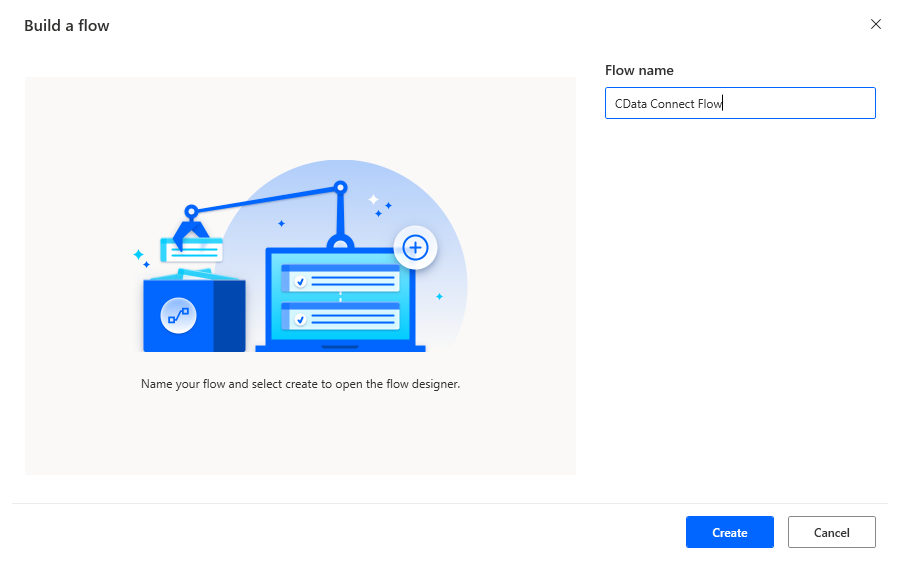
In the flow editor, you can add the actions to connect to SQL Analysis Services, query SQL Analysis Services using SQL, and write the query results to a CSV document.
Add an Open SQL Connection Action
Add an "Open SQL connection" action (Actions -> Database) and click the option to build the Connection string. In the Data Link Properties wizard:
- On the Provider tab: select Microsoft OLE DB Driver for SQL Server
- On the Connection tab:
- Select or enter a server name: set to the address and port of the SQL (TDS) endpoint of CData Connect, separated by a comma (e.g. localhost,8033)
- Enter information to log onto the server: select "Use a specific username and password" and use CData Connect credentials
- Select the database: use the database configured above (e.g. SSAS1)
- Click "Test Connection" to ensure the connection is configured properly
- Click "OK"
![A configured connection to CData Connect]()
After building the connection string in the Data Link Properties wizard, save the action.
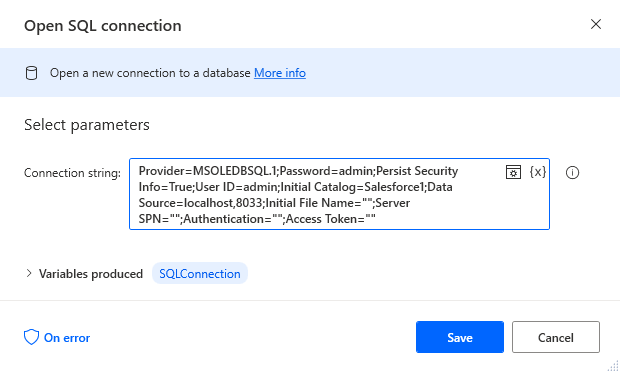
Add an Execute SQL Statement Action
Add an "Execute SQL statement" action (Actions -> Database) and configure the properties.
- Get connection by: SQL connection variable
- SQL connection: %SQLConnection% (the variable from the "Open SQL connection" action above)
- SQL statement: SELECT * FROM Adventure_Works
After configuring the properties, save the action.
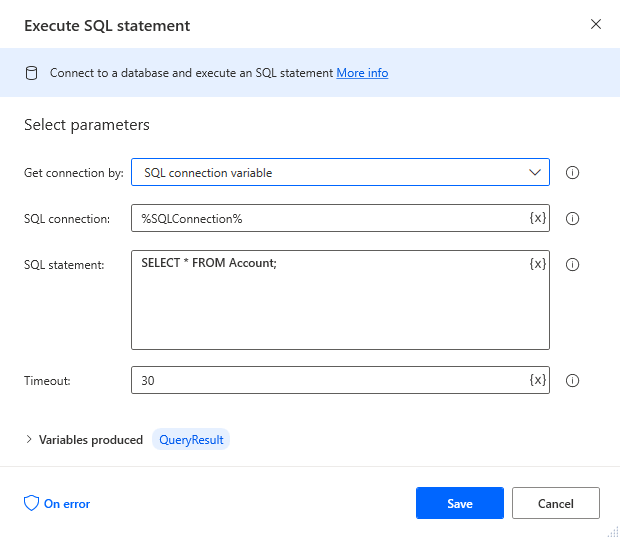
Add a Write to CSV File Action
Add a "Write to CSV file" action (Actions -> File) and configure the properties.
- Variable to write to: %QueryResult% (the variable from the "Execute SQL statement" action above)
- File path: set to a file on disk
- Configure Advanced settings as needed.
After configuring the properties, save the action.
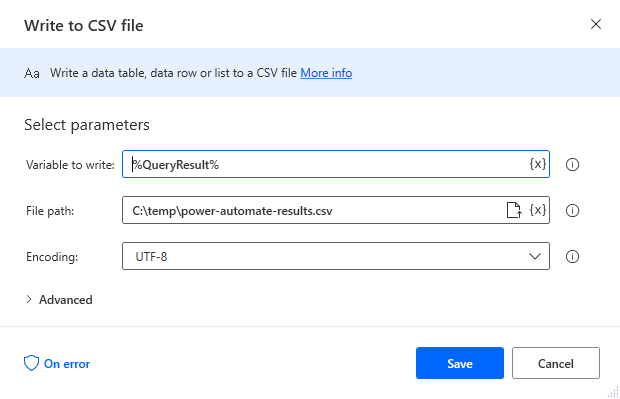
Add a Close SQL Connection Action
Add a "Close SQL connection" action (Actions -> Database) and configure the properties.
- SQL Connection: %SQLConnection% (the variable from the "Open SQL connection" action above)
After configuring the properties, save the action.
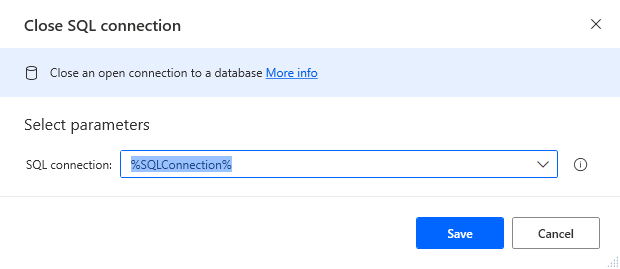
Save & Run the Flow
Once you have configured all the actions for the flow, click the disk icon to save the flow. Click the play icon to run the flow.
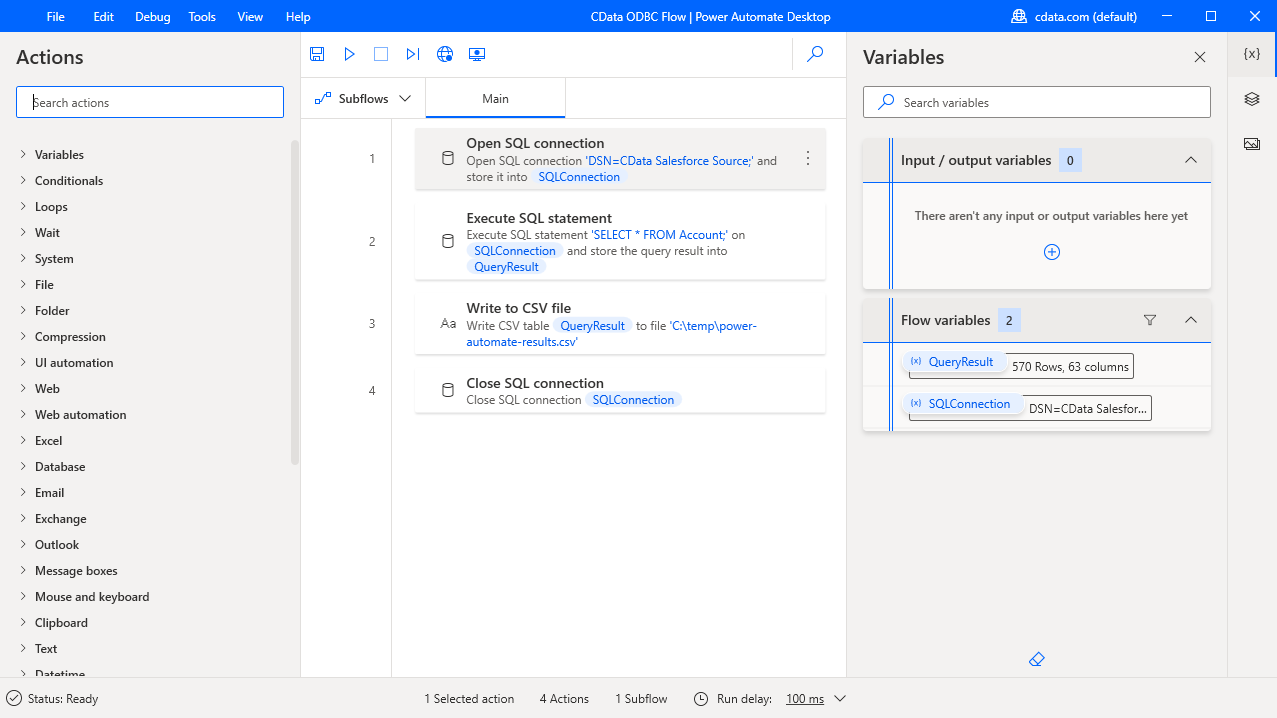
Now you have a workflow to move SQL Analysis Services data into a CSV file.
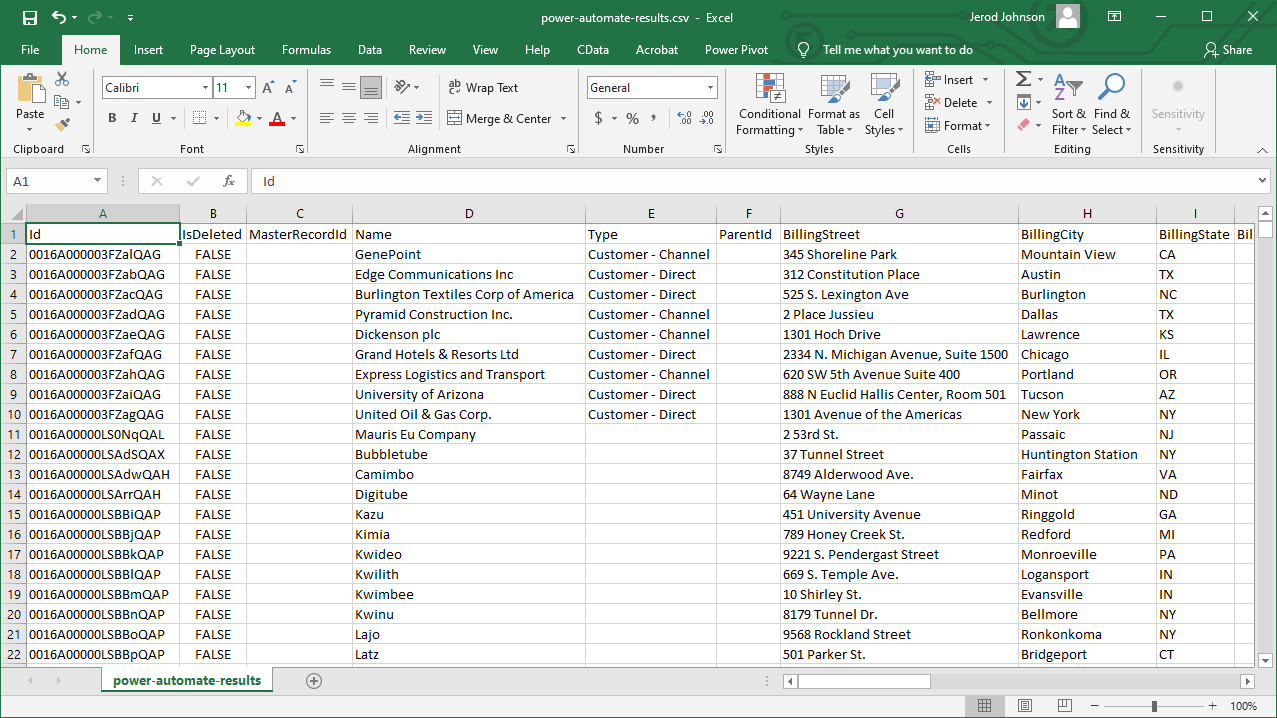
With CData Connect, you get live connectivity to SQL Analysis Services data within your Microsoft Power Automate workflows.
Related Power Automate Articles
This article walks through using CData Connect Server with Power Automate Desktop. Check out our other articles for more ways to work with Power Automate (Desktop & Online):








